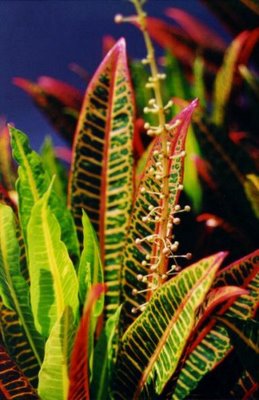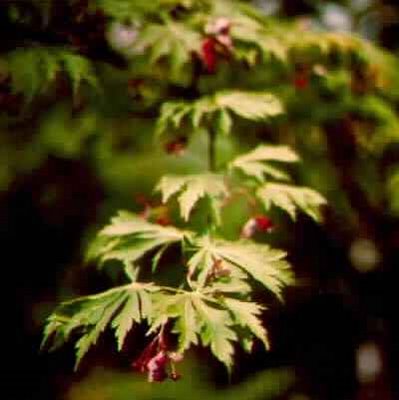
Categories
- Medieval Period
- Psychology
- Peaceful Garden
- Nature
- Pets
- Women
- Inspirational Quotes
- Motivational
- Food
- Health
- Kids
- Faith
- Money
- Animals
- Celebrity
- Philosophy
- Sales Success
- Astrology
- Motivational Stories
- Spirituality
- Man/Human Body
- ClipArts
- Arts
- Shopping
- Religion
- House
- Angels
- Victorian
Sponsored Links
Garden Archives
- January 2006
- February 2006
- March 2006
- April 2006
- May 2006
- July 2006
- November 2006
- December 2006
- February 2007
- March 2007
- April 2007
- May 2007
- July 2007
- August 2007
- September 2007
- October 2007
- December 2007
- January 2008
- February 2008
- April 2008
- May 2008
- June 2009
Get Listed
Tuesday, February 28, 2006
Monday, February 27, 2006
Fort Worth Japanese Garden

The Fort Worth Japanese Garden is a 7.5-acre Japanese Garden in the Fort Worth Botanic Garden. The garden was built in 1970 and many of the plants and construction materials were donated by Fort Worth's sister city Nagaoka, Japan. Attractions at the garden include a meditation garden, a moon viewing deck, a pagoda, and fishfood dispensers to feed the hundreds of koi in the garden's ponds. The garden hosts two annual events, the Spring Festival and the Fall Festival, featuring demonstrations of Japanese art and culture.
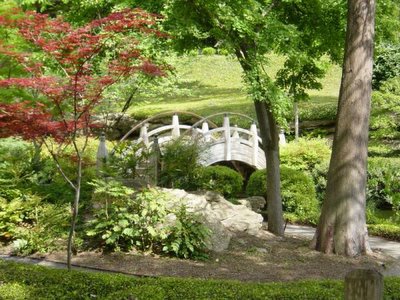
The moon bridge is almost a necessity for any Japanese garden.
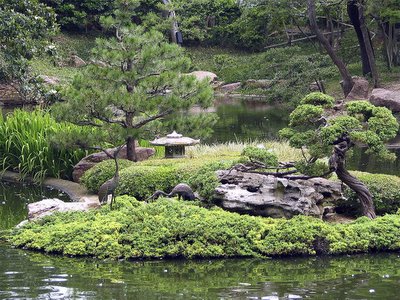
Peaceful Island Surrounded by water.
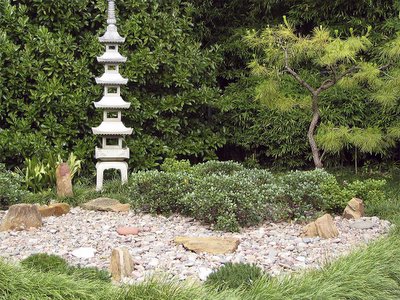
Combination of plants, rocks, and forms to create a quiet area.
Sunday, February 26, 2006
Fort Worth Botanic Garden

A quiet spot for reflection. The Koi are on patrol looking for food.
A quiet area with the sounds of water falling.
Soothing sound of water over rocks.
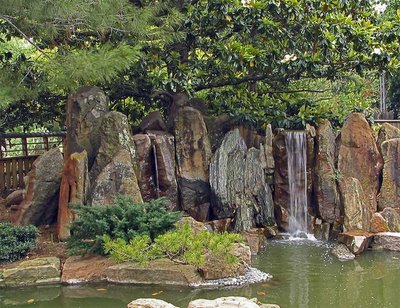
Small Waterfall
Saturday, February 25, 2006
Informations about Fort Worth Botanic Garden
Telephone : (817) 871-7686

The Fort Worth Botanic Garden, the oldest botanic garden in Texas, is a lush 109-acre tapestry of dappled shade and vibrant splashes of color. A peaceful haven nestled in the heart of Fort Worth's Cultural District, the Garden is home to over 2,500 species of native and exotic plants that flourish in its 21 specialty gardens.
Enjoy the classic European design of the famous Rose Garden, where 2000 roses dance in celebration of the diversity and beauty of our national flower. Meander down the enticing paths, past intriguing sculpture and hidden pocket plantings to the heart of the garden.
Sheltered benches invite you to sit, relax, breathe, and contemplate. Take time to stroll through the world-renowned Japanese Garden, with its koi-filled pools, dramatic waterfalls, sculpted hillsides, and meticulously crafted stonework. Discover the Japanese Garden Gift Shop for intriguing items to commemorate your visit. While you're here, consider the Gardens Restaurant for a delectable light lunch.
The Botanic Garden Center provides a unique and relaxing atmosphere for your next business meeting or special event, offering rooms in various sizes to accommodate your needs. Whether you're planning a conference, a meeting or a small, intimate wedding reception, the ambiance of the Garden will enrich your group's experience of the event.
Friday, February 24, 2006
Thursday, February 23, 2006
Wednesday, February 22, 2006
Is Croton Poisonous?

Common names Croton
Botanical name Codiaeum variegatum
Poisonous parts Bark, roots, latex, leaves
Toxins 5-deoxyingenol
This exotic plant is grown for it's colorful foliage.
Chewing the bark and roots is said to cause burning of the mouth. The latex has caused eczema in some gardeners after repeated exposure. Some young leaves are used in the East Indies as a vegetable, but cases of irritation have been reported. The latex has caused eczema in some gardeners (Morton 1962, Frohne and Pfander 1983).
Tuesday, February 21, 2006
Croton Care

Also known as variegated Laurel, Crotons come from the South Pacific Islands. The habit of growth varies with the type of plant. Dwarf croton varieties are bushy and compact. The tree-like varieties are tall and have a good spread. Crotons are usually maintained at two to three feet, but if given the opportunity, they can grow into large trees.
Caring for a croton is not simple and requires both knowledge and experience. Basic prerequisites are plenty of light, suitable temperature, adequate watering and plenty of humidity in the atmosphere.
To start, crotons need plenty of light in order to maintain its intense colors although new varieties do quite well in lower light. Lots of light and moderate temperatures are the factors that will ensure your plant has vivid colors and quick growth. In other words, the more the light your plant gets, the more beautiful and vivid the colors of its leaves. During the winter you can allow some direct sunlight on your plant, but keep it at 2-3 hours daily. If more, then you will risk sun-burning of the leaves while during summer you should only provide filtered light.
Crotons cannot stand either too high or too low temperatures (the ideal temperature is around 20οC). So, make sure to avoid fluctuations of temperature and keep the pots away from drafts. If the temperature has such ups and downs you will see leaves, in different parts of the plant, drop. Generally, if the temperature is too low your plant may drop all of its leaves in no time.
If you notice lower leaves dropping, or if the leaves colors are dull and you also get brown tips, it is possible that your plant needs more humidity.
Provide humidity by spraying the leaves with lukewarm water as often as you can, even daily if you can spare the time. Use a humidifier or place the pot on a tray with wet pebbles so that the plant will absorb the necessary humidity.
Usually during summer, although light is more than adequate, the high temperatures may fade the colors of the leaves. To avoid this, in summer move your pot to the coolest spot of your home and cut down on fertilizing as over-fertilizing can have the same effects as high temperatures. The growth of the plant slows down in winter, when the plant rests, but the colors of its leaves remain as bright if light is adequate.
You should fertilize every couple of months, using liquid fertilizer, from spring till fall while you should not add any fertilizer during
Light
Different varieties have differing light requirements. Some crotons thrive in full sun, while others do best in semi-shade to full shade. In general, the more sunlight received by the foliage, the brighter the colors will be. The light requirement indoors is usually about six to eight hours of light. Plants placed in east or west windows do best, but should not be exposed to direct sunlight coming through the glass. Crotons respond well to artificial light from gro-lites.
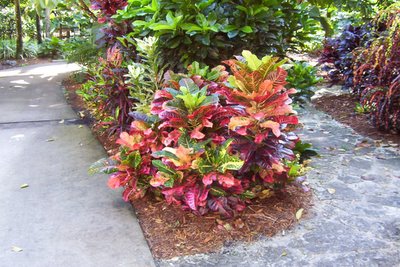
Water
Keep crotons lightly moist at all times. Never let your croton dry out completely, which cause foliage to drop. Foliage should be misted at least two to three times per week. Do not over-water or allow the plant to sit in water.
Temperature
Crotons require warm, moist conditions with a minimum winter temperature of 60 degrees. Changes in climatic conditions should be made gradually to avoid defoliation.
Soil
Good drainage is necessary. Use quality potting soil.
Fertilizer
Fertilize frequently and lightly with a balanced soluble food for houseplants or trees and shrubs.
Pests
Scales, thrips, mealy bugs and spider mites are some of the more common pests. Preventative treatment is advised. Spray at least once a month. Always use a spreader sticker with the insecticide. If spider mites are detected, make three applications of a recommended miticide at five-day intervals. Timing of spraying is crucial for killing the egg hatch.
Monday, February 20, 2006
Croton
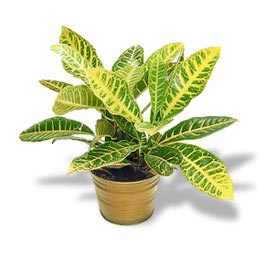
Codiaeum variegatum
Tropical Plants
Evergreen Shrub
Mature Size: 4 feet by 4 feet
Full Sun or Part Sun
Variegated foliage
Tropical; plant only in protected location
Crotons are popular plants for adding bright colors to indoor gardens and patios. They make excellent specimen plants in a window that does not receive direct sunlight.
CHARACTERISTICS:
These are one of the most eye-catching plants, with leaf colors of yellow, pink, red, and orange. They will wilt if the soil completely dries out. Crisp crunchy leaf ends indicate soil is staying too moist. Crotons are available in many different leaf colors and leaf shapes.

FOLIAGE
Many varieties of different shaped leaves with colors ranging from nearly all black through red, green, orange, pink, cream and any combination. Unusually twisted and sectioned leaves are very ornamental.
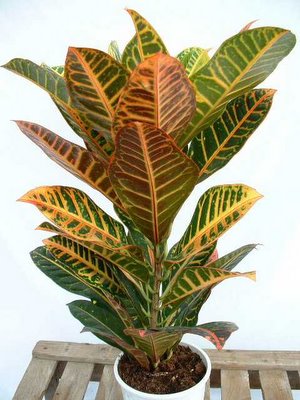
PRUNING:
Cut off the top of the stem, back to the joining leaf or axil. This keeps them bushy.
Sunday, February 19, 2006
Saturday, February 18, 2006
Thursday, February 16, 2006
Wednesday, February 15, 2006
Shrubs for Summer Colour
Kolkwitzia amabilis
Beauty bush

Deep pink, tubular flowers with patterned, yellow throats smother the arching branches of this delightful shrub in early summer; look out for K.a 'Pink Cloud', for its deep pink blooms. For the rest of the year it creates a leafy background. Easy to please, teh beauty bush tolerates a wide range of soils. Prune after flowering by shortening or removing up to a third of the flowered stems.
Hydrangea serrata 'Bluebird'
Blue lacecap hydrangea

Hydrangeas provide welcome late-summer colour and perform best when given a cool, moist root run and light shade. In classic lacecap fashion, a dome of blue fertile flowers forms a hazy centre surrounded by an abstract pattern of ray florets, which will vary in colour according to soil. On chalk, expect a reddish-purple tinge, while on acid soils they will be violet-blue. Prune by thinning or cutting back hard in spring.
Hibiscus syriacus 'Red Heart'
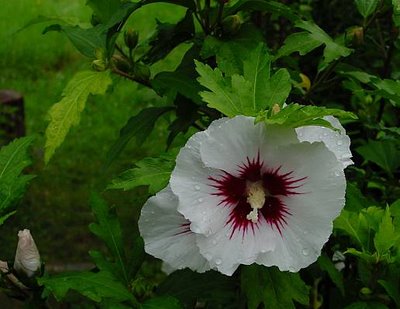
Although slow-growing, a mature, hardy hibiscus in full bloom is a wonderful sight. Hibiscus are among the last shrubs to burst into growth in spring and they wait until late summer before producing their large, trumpet-shaped blooms. This cultivar bears dramatic white flowers, 6cm across, with dark maroon centres. Good for chalky soils. Pruning is not usually needed.
Lavatera 'Rosea' Tree mallow
For lasting colour choose shrubby mallows such as Lavatera 'Rosea', which produces masses of flowers all summer long.
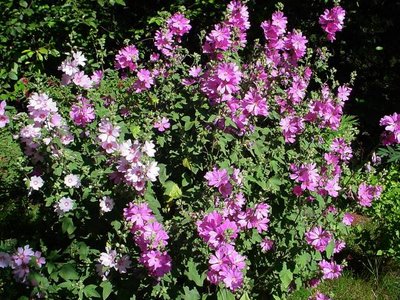
For sheer long-standing, mid- to late summer flower power, this shrub is unbeatable; it is also easy to grow. Deep rosy-pink flowers 10cm across open profusely over grey-green leaves. For best results, provide well-drained soil and shelter from cold winds. An annual hard pruning in early spring, to remove old growth, will rejuvenate a plant and help it to live longer.
Tuesday, February 14, 2006
Monday, February 13, 2006
Plants for Water Garden
Water lily

Although ideal for smaller ponds, including barrel ponds, the 10-13cm diameter flowers are still a good size. These are deep pinkish-red with central stamens of orange-red. Its leaves are an attractive bronze as they unfurl in spring. Plant in a water depth of 15-30cm.
Propagate by division of rhizomes in spring. Separate offsets or remove plantlets.
Nymphaea 'Pygmaea Helvola'
Pygmy water lily
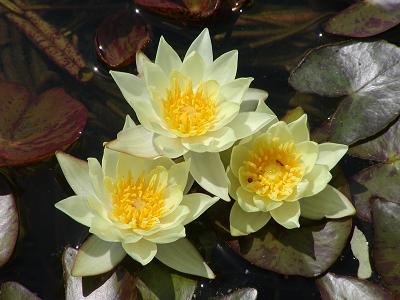
For restricted areas, or moderate ponds where more than one lily is to be grown, this is ideal. Leaves, heavily mottled with purple, are attractive and not overpowring. They are joined by semi-double, clear yellow flowers 5-8cm across in summer. Plant in depths of 15-23cm.
Propagate by lifting, dividing and replanting into baskets for aquatics.
Nymphoides peltata
Fringed water lily

Suitable for a wildlife pool, teh leaves resemble small lily pads and grow from long runners, quickly colonizing the water surface. Bright yellow flowers 2cm with fringed petals are held above the water by stout stalks in summer. Water depth 15-60cm.
Propagate by division in spring or separate runners in summer.
Stratiotes aloides
Water soldier
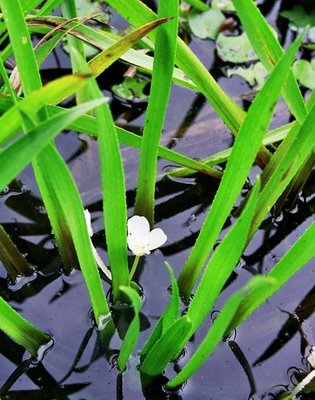
A curious free-floating plant, the rosette of spiky leaves hangs half in and half out of the water. As the temperature drops in autumn, rosettes sink to the warmer depths of the pond, rising again the following spring. White flowers are sometimes borne in summer.
New plants form from spreading stems and can be separated in spring. Water depth 30-90cm (1-3ft).
Myriophyllum aquaticum
Parrot's feather, Diamond milfoil
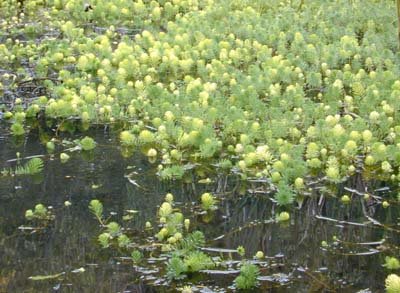
Submerged or marginal, parrot's feather pokes its stems of feathery foliage above water and will climb happily up the pond's banks. Submerged leaves are longer than emergent ones; the summer flowers are so tiny that nobody really notices them.
Propagate by cuttings. Grow in baskets of loamy soil in water 15-90cm (6-36in) deep.
Sunday, February 12, 2006
Plants for pools

Aquatic plants not only add to the beauty of a pond, they are also essential for its well-being. Submerged, oxygenating plants revitalize the water and the floating leaves of sun-lovers like water lilies shade part of the surface and discourage the rapid build-up of algae. The roots of aquatic plants are also great for removing minerals on which the algae feed.
Aponogeton distachyos ( Water hawthorn)

The long, oval, floating leaves of water hawthorn make a change from the rounded pads of lilies. White, fragrant, hawthorn-like flowers with purple-brown anthers open in spring and autumn and are held just above the water on forked branches.
Divide the rhizomes of mature plants when dormant and repot into aquatic baskets. Roots must be 30-90cm (1-3ft) deep.
Ceratophyllum demersum ( Hornwort )

The slender stems of this useful oxygenator are clothed with whorls of dine, forked leaves, giving an overall feathery appearance. Few roots are produced, though the stems sometimes root into the mud at the bottom of the pond. Stems tips form into resting buds and sink for winter, drifting back up in spring. Propagate simply by pulling away some stem and floating it in water. Grows in water 60-90cm (2-3ft) deep.
Eichhornia crassipes ( water hyacinth )

It is hard to think that such an exotic aquatic has become a weed of tropical waterways worldwide. The inflated leaf stalks allow the water hyacinth to float, while dark, purplish roots hang down into the water. In hot summers, stalks of pale blue flowers marked with yellow and purple are produced. Lift and overwinter on trays of moist, soilless compost at a mnimum temperature of 13C (55F).
Hottonia palustris ( water violet )

As the water warms up in early spring, growth rises to the pond surface. Long stems bear deeply divided foliage above and below water. Stems of pale pinkish-lilac flowers are borne in spring. Plant in the muddy bottom of still, preferably slightly acid, shallow water, to 45cm(18in)deep.
Propagate by stem cuttings in spring and summer.
Hydrocharis morsus-ranae ( Frogbit )

Running stems produce new plantlets, so frogbit soon spreads to cover an area of water with its floating leaves like tiny, kidney-shaped lily pads. Small, papery, white flowers with yellow centres appear in summer. The plants are mostly free-floating, but will root into shallow mud, sinking to overwinter as buds.
To propagate, cut plantlets away from the parents. Needs a water depth up to 30cm (12in).
Thursday, February 09, 2006
Acer japonicum 'Aconitifolium'
Acer japonicum

Common Name
Fullmoon maple
Family - Aceraceae

This delightful cultivar bears rounded yet deeply lobed leaves, toothed around the edges. Fresh lime green spring foliage accompanies clusters of small red flowers, pale seedpods appear in summer and its autumn tints are rich crimson.

Flowers/Fruits/Seeds - Flowers are red, appear with the foliage, and are quite attractive and conspicuous in emergence. They last for approximately 10 days to 2 weeks. Flowering occurs approximately the 1st to 2nd week of April here. Seed are also a deep red and conspicuous, standing erect on the branches.
Pests and Diseases - None noticed. As a container grown tree, it did exhibit some leaf scorch. Many Maples, particularly Japanese Maples are very sensitive to fertilizer salts. When container growing, one has to be careful that fertilizer levels are not too high, or use a fertilizer that has a more organic source.
Landscape Use - Specimen use, it's excellent advantage is its small size and it can fit into the smallest of pocket sized gardens. Provides great interest in flower, foliage, fall color and form for all seasons.

Give all Japanese maples a moist but well-drained soil in a sheltered position as they dislike waterlogging and exposure to wind.














